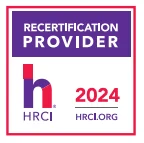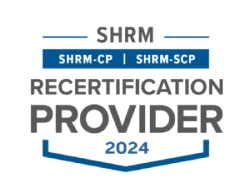November Compliance Recap

November Compliance Recap
November was a relatively busy month in the employee benefits world.
The U.S. Supreme Court (Supreme Court) heard oral arguments in the case of California v. Texas, which is the case challenging the constitutionality of the ACA. The Internal Revenue Service (IRS) released the updated Patient-Centered Outcomes Research Institute (PCORI) fee for plan years that end on or after October 1, 2020, and before October 1, 2021.
The Department of Labor (DOL) released a final rule on financial factors in selecting plan investments that imposes requirements on ERISA plan fiduciaries under their duties of loyalty and general prudence. The IRS released an information letter on the relief available under IRS Notice 2020-29 as it applies to dependent care flexible spending arrangements (DCAPs). The IRS also released an information letter on unused qualified transportation benefits due to COVID-19.
The Department of Health and Human Services (HHS) released an annual report to Congress on Health Insurance Portability and Accountability Act (HIPAA) compliance for 2018. The IRS issued updated frequently asked questions (FAQs) on qualified health plan expenses for purposes of calculating an employer’s tax credits when providing paid leave under the Families First Coronavirus Response Act (FFCRA). HHS released two drug pricing rules regarding Medicare drug pricing.
Supreme Court Hears Oral Arguments on the ACA Case
The Supreme Court heard oral arguments in the case of California v. Texas, which is a consolidation of cases filed by state attorneys general and governors challenging the constitutionality of the individual mandate contained in the ACA and whether the entire ACA can be struck down as a result. A decision from the Supreme Court is expected by June 2021.
See UBA Advisors “The U.S. Supreme Court and the Future of the Affordable Care Act, Part 1” and “The U.S. Supreme Court and the Future of the Affordable Care Act, Part 2” for more information.
IRS Releases Updated PCORI Fee
The IRS released Notice 2020-84 that provides the PCORI fee amount is $2.66 per covered life for plan years that end on or after October 1, 2020, and before October 1, 2021.
Read more about the PCORI fee.
DOL Releases Final Rule on Financial Factors in Selecting Plan Investments
The DOL released a final rule on financial factors in selecting plan investments that imposes requirements on ERISA plan fiduciaries under their duties of loyalty and general prudence contained in Section 404 of ERISA. The final rule contains several amendments to fiduciary investment duties. The final rule:
- Adds provisions that ERISA fiduciaries must evaluate investments and investment courses of action (including the selection of available investment options for plan participants in individual account plans) based solely on “pecuniary factors” (i.e., financial considerations that have a material effect on the risk or return of an investment based on appropriate investment horizons consistent with the plan’s investment objectives and funding policy).
- Prohibits fiduciaries from putting unrelated objectives above the interests of participants and prohibits fiduciaries from sacrificing investment return or taking on additional investment risk to promote non-pecuniary goals.
- Requires fiduciaries to consider reasonably available alternatives to meet their loyalty
and prudence duties under ERISA (under the final rule, a fiduciary is required only to
compare alternatives that are reasonably available under the circumstances. The
Department used the phrase ‘‘reasonably available alternatives’’ to confirm that the rule does not require fiduciaries to consider every possible alternative, and to allow for the possibility that the characteristics and purposes served by a given investment or investment course of action may be sufficiently rare that a fiduciary could prudently determine that there were no other reasonably available alternatives for purpose of this comparison requirement). - Sets forth required investment analysis and documentation requirements for circumstances in which plan fiduciaries use non-pecuniary factors when choosing between or among investments that the fiduciary is unable to distinguish on the basis of pecuniary factors alone (i.e., fiduciary must have documentation supporting that an evaluation was done and that the fiduciary did not improperly determine economic equivalence between investments. This is referred to as the “tie breaker” rule).
The final rule takes effect on January 12, 2021.
IRS Releases Information Letter on Available Relief under IRS Notice 2020-29
The IRS released an information letter responding to an inquiry regarding whether an individual can receive a refund for her DCAP contributions that have gone unused due to her child’s summer camp not being open as a result of COVID-19.
In the letter, the IRS provides that while Notice 2020-29 allows an employer to amend a Section 125 cafeteria plan to give employees increased flexibility to make prospective mid-year election changes to their DCAP during 2020 (i.e., revoke an election, make a new election, or decrease or increase an existing election), Notice 2020-29 does not allow an employee to receive amounts from a DCAP for anything other than reimbursements for dependent care expenses. Therefore, refunding unused DCAP contributions to an employee is not permitted.
Read more about Notice 2020-29.
IRS Releases Information Letter on Unused Qualified Transportation Benefits Due to COVID-19
The IRS released an information letter responding to an inquiry regarding whether unused qualified transportation benefits can be rolled over to a parking account due to changes in commute as a result of COVID-19.
Qualified transportation benefits include transportation in a commuter highway vehicle between the employee’s residence and place of employment, any transit pass, and qualified parking. In the letter, the IRS provides that an employee may roll over unused qualified transportation benefits for one benefit and use it for another qualified benefit, such as parking, provided that the employer offers the other qualified benefit and the monthly maximum for that benefit is not exceeded (for 2020, the limit for the commuter vehicle benefit and the transit pass benefit combined is $270 per month and the limit for parking is $270 per month). The IRS further provides that an employee may carry over unused compensation reduction amounts and use them for future qualified transportation expenses in subsequent periods under the employer’s plan provided the employee has made a valid compensation reduction election and their employment has not been terminated. The IRS notes that unused qualified transportation benefits provided through a compensation reduction agreement cannot be refunded to a participant.
CMS Releases Proposed 2022 Benefit Payment and Parameters Rule
The Centers for Medicare & Medicaid Services (CMS) has released a proposed rule and fact sheet for benefit payment and parameters for 2022. CMS also released its draft 2022 actuarial value calculator and draft 2022 actuarial value calculator methodology.
Although the proposed rule would primarily affect the individual market and the Exchanges, as well as pharmacy benefit managers, the proposed rule addresses the following topics that may impact employer-sponsored group health plans:
- Maximum annual limitation on cost sharing for plan year 2022
- Premium payments on behalf of individuals with individual coverage health reimbursement arrangements (ICHRAs) and qualified small employer health reimbursement arrangements (QSEHRAs) that are made to issuers of individual health plans
- Medical Loss Ratio (MLR) rebates
Public comments on the proposed rule are due by 5:00 p.m. on December 30, 2020.
Read more about the proposed rule.
HHS Releases Annual Report to Congress on HIPAA Privacy, Security, and Breach Notification Rule Compliance
HHS released the Annual Report to Congress on HIPAA Privacy, Security, and Breach Notification Rule Compliance For Calendar Year 2018 (Report). The Report includes the number of complaints received by HHS from the public and breaks the complaints down by those resolved informally and those that resulted in the imposition of civil monetary penalties or that were resolved through monetary settlements. The Report also provides the number of compliance reviews HHS conducted and the outcome of each review, the number of subpoenas or inquiries issued, and the number of audits performed and a summary of audit findings. The Report concludes by providing HHS’ plan for improving compliance with and enforcement of the HIPAA Rules for the following year.
IRS Issues FAQs on Qualified Health Plan Expenses for FFCRA Leave Tax Credits
The IRS issued updated FAQs on determining the amount of allocable qualified health plan expenses for purposes of calculating an employer’s tax credits when providing paid leave under the FFCRA. The FAQs answer questions such as whether employer and employee contributions to the health plan are included in the calculation and how qualified health plan expenses are determined for account-based plans such as FSAs, HRAs, and HSAs.
HHS Releases Two Drug Pricing Rules Regarding Medicare Drug Pricing
HHS released the Most Favored Nation (MFN) Model Interim Final Rule (MFN Rule) and the Drug Pricing Rebate Final Rule (Drug Pricing Rebate Rule). The MFN Rule aims to lower prescription drug spending in Medicare Part B by tying Medicare rates to the lowest prices paid in other countries for the same drugs. Providers will be reimbursed for 50 Part B drugs, determined annually, under the MFN Rule based on the MFN price. The Drug Pricing Rebate Rule aims to lower the price of Medicare Part D drugs by eliminating the regulatory safe harbor for rebates from drug manufacturers which would force pharmacy benefit managers to pass along the rebates to patients at the point of sale.
The rules do not apply to drugs paid for under a group health plan.
Question of the Month
Q: How soon do group health plans have to cover COVID-19 vaccines once they are approved?
A: Plans and issuers subject to the preventive health services mandate under the Patient Protection and Affordable Care Act (ACA) must cover recommended immunizations for COVID19 that are qualifying coronavirus preventive services, even if not listed for routine use on the Immunization Schedules of the CDC and whether in-network or out-of-network (with certain exclusions). Such coverage is required to be provided within 15 business days after the date the United States Preventive Services Task Force (USPSTF) or the Advisory Committee on Immunization Practices of the CDC (ACIP) makes an applicable recommendation relating to a qualifying coronavirus preventive service.
Categories
Archive







